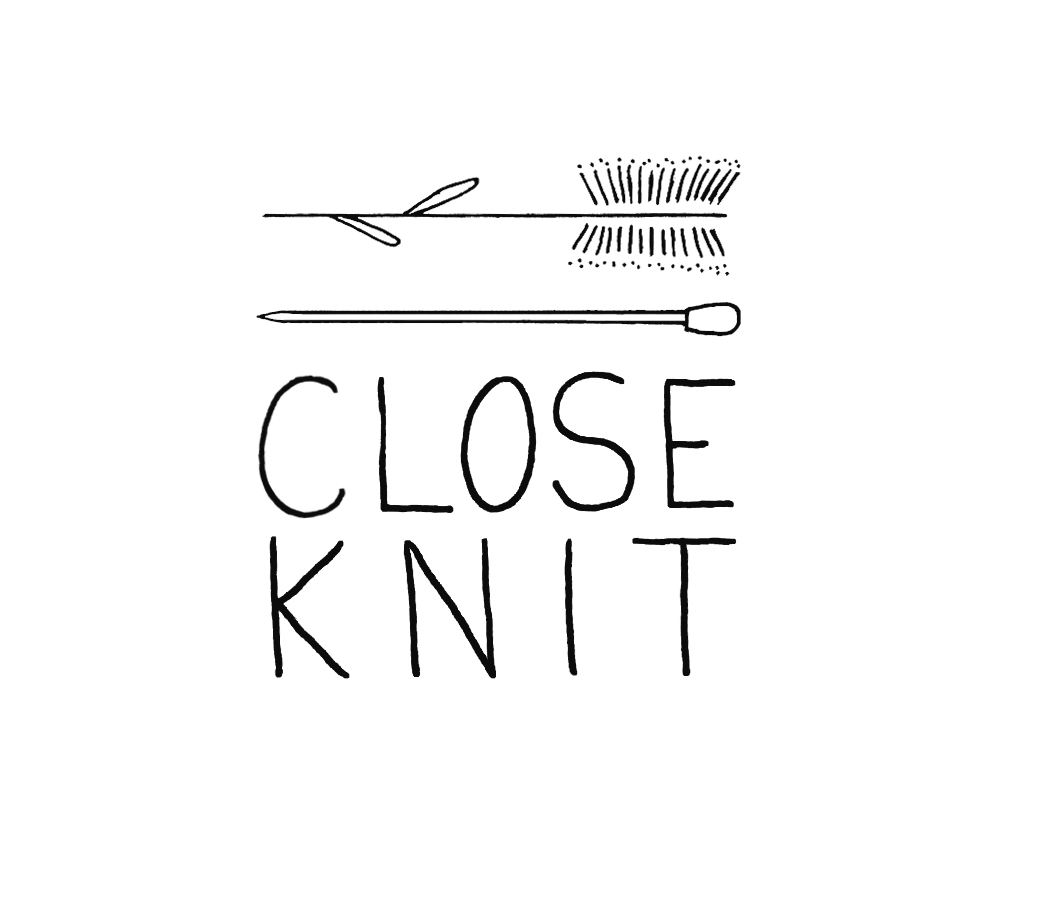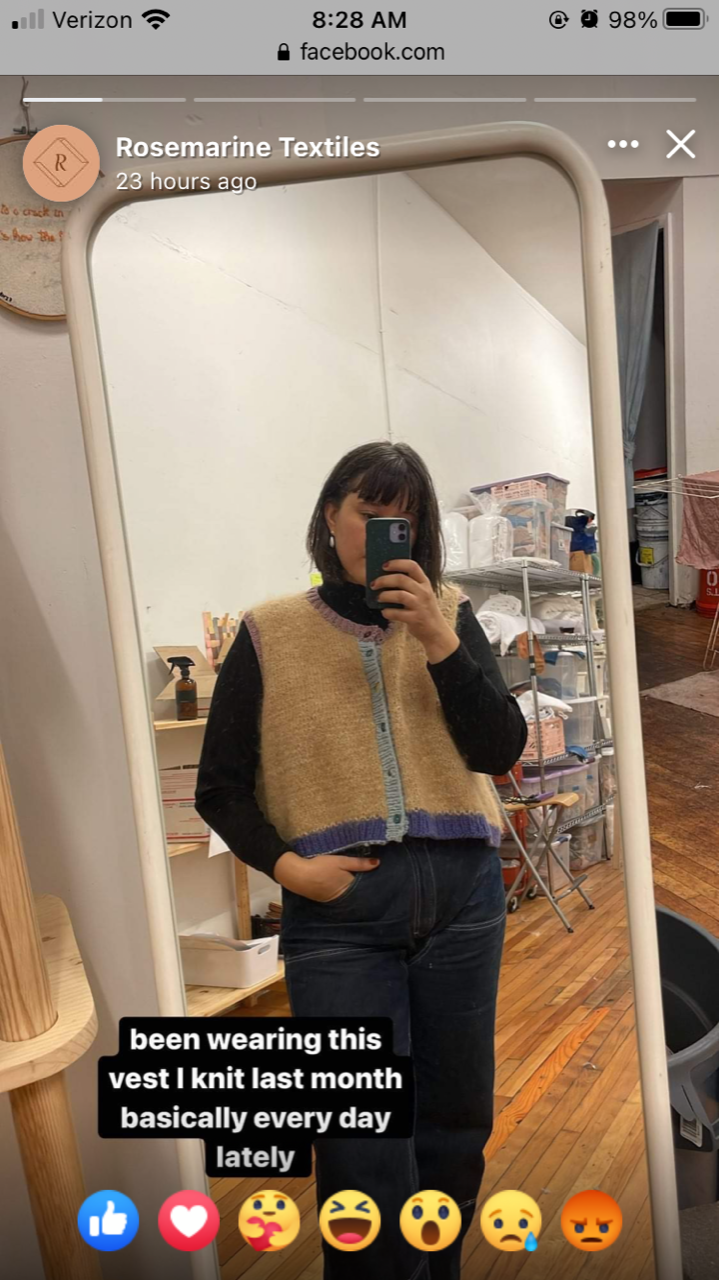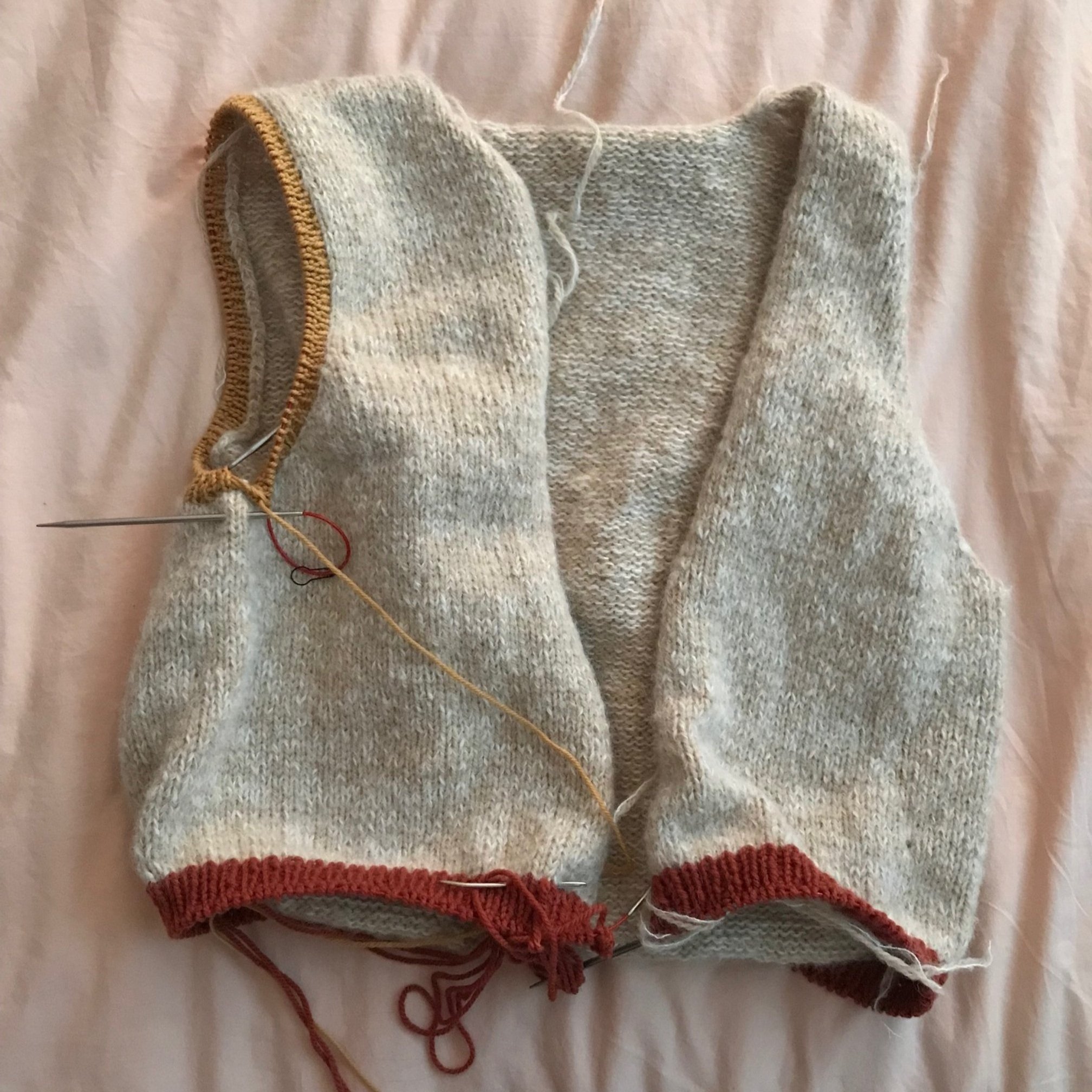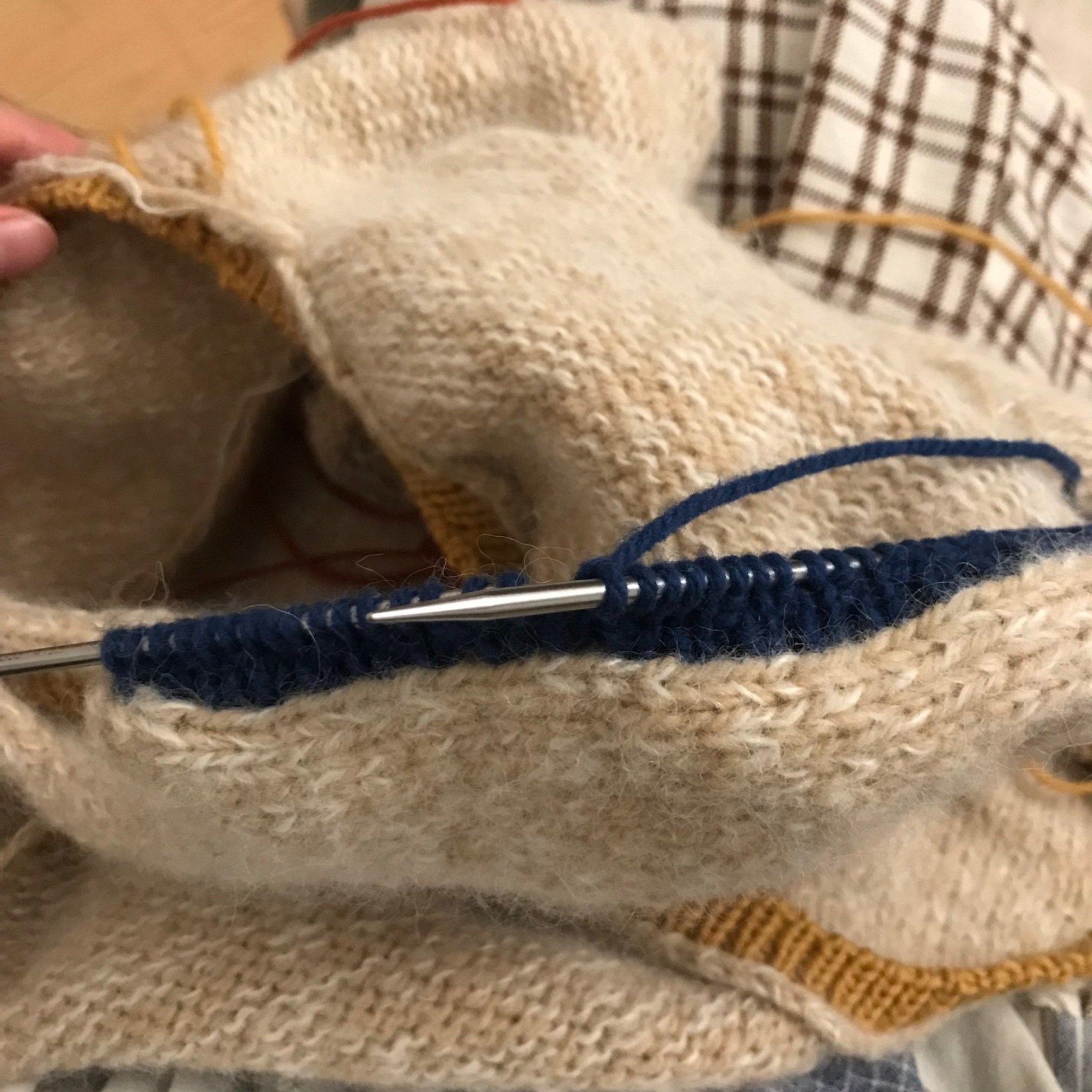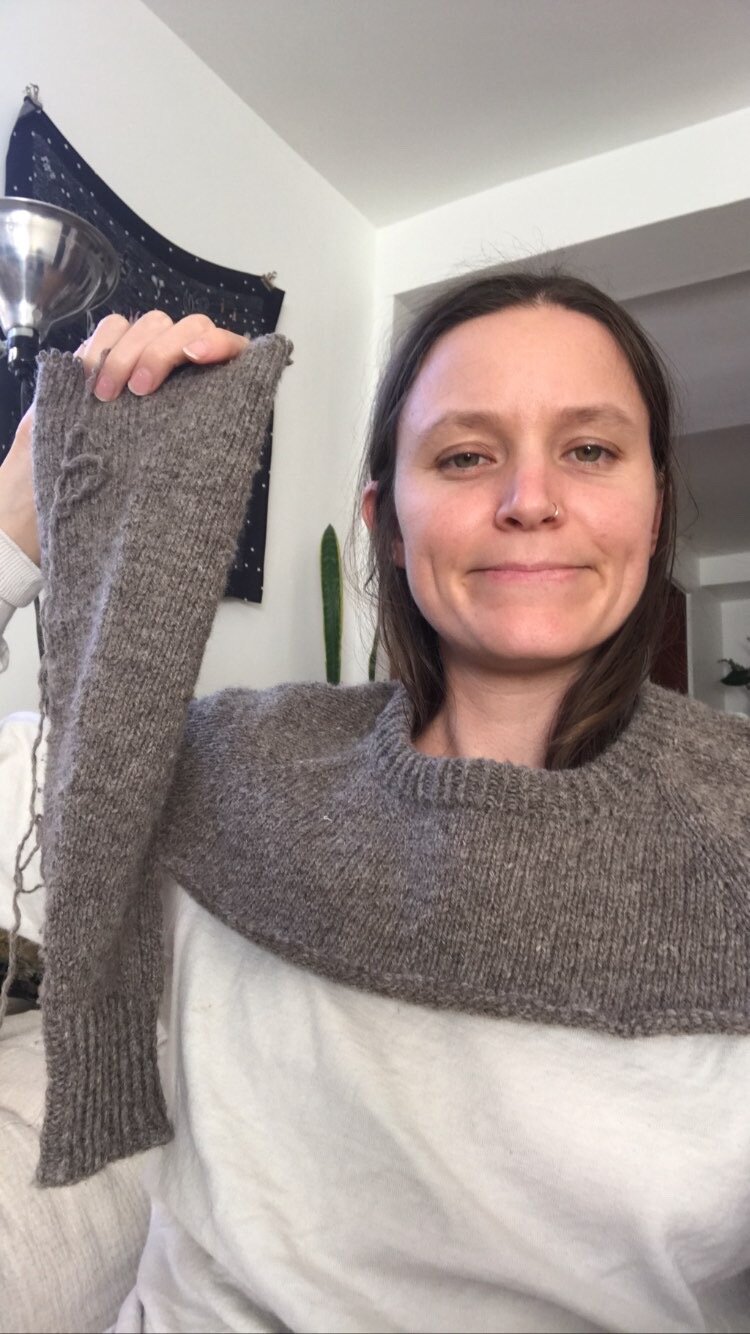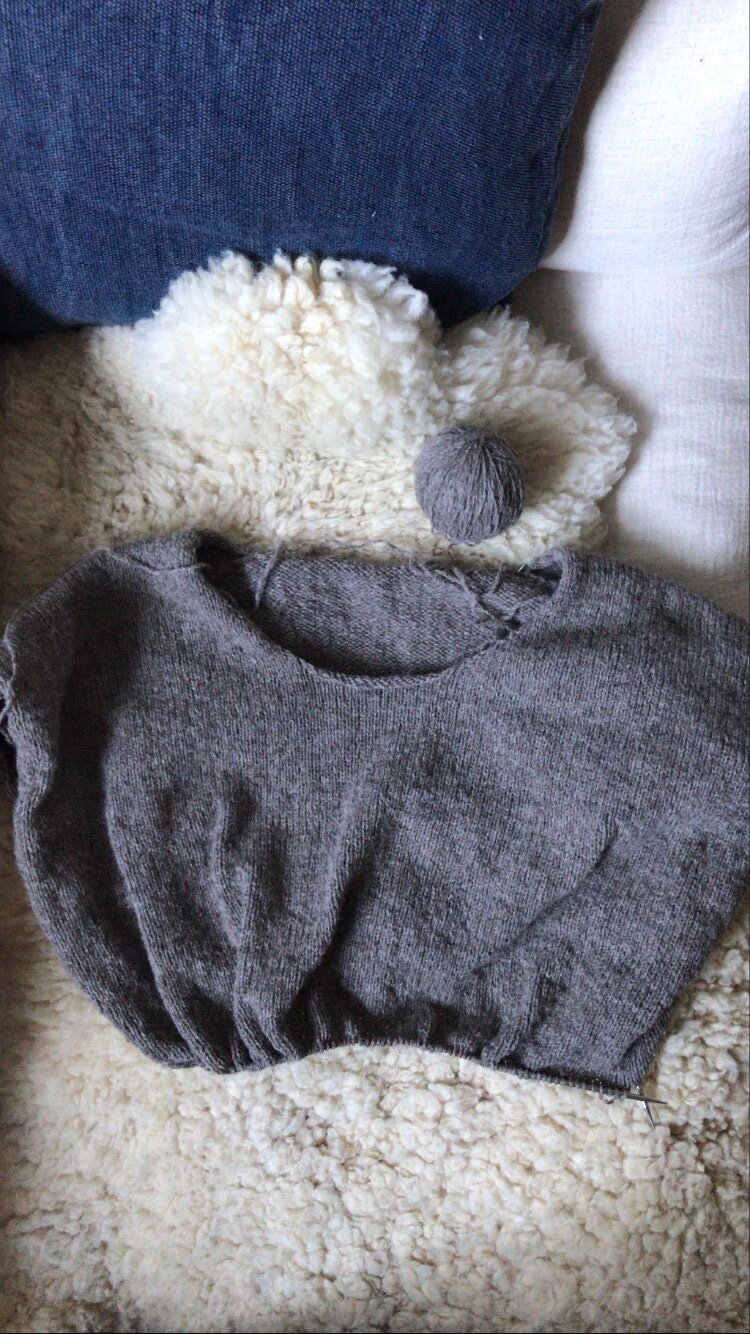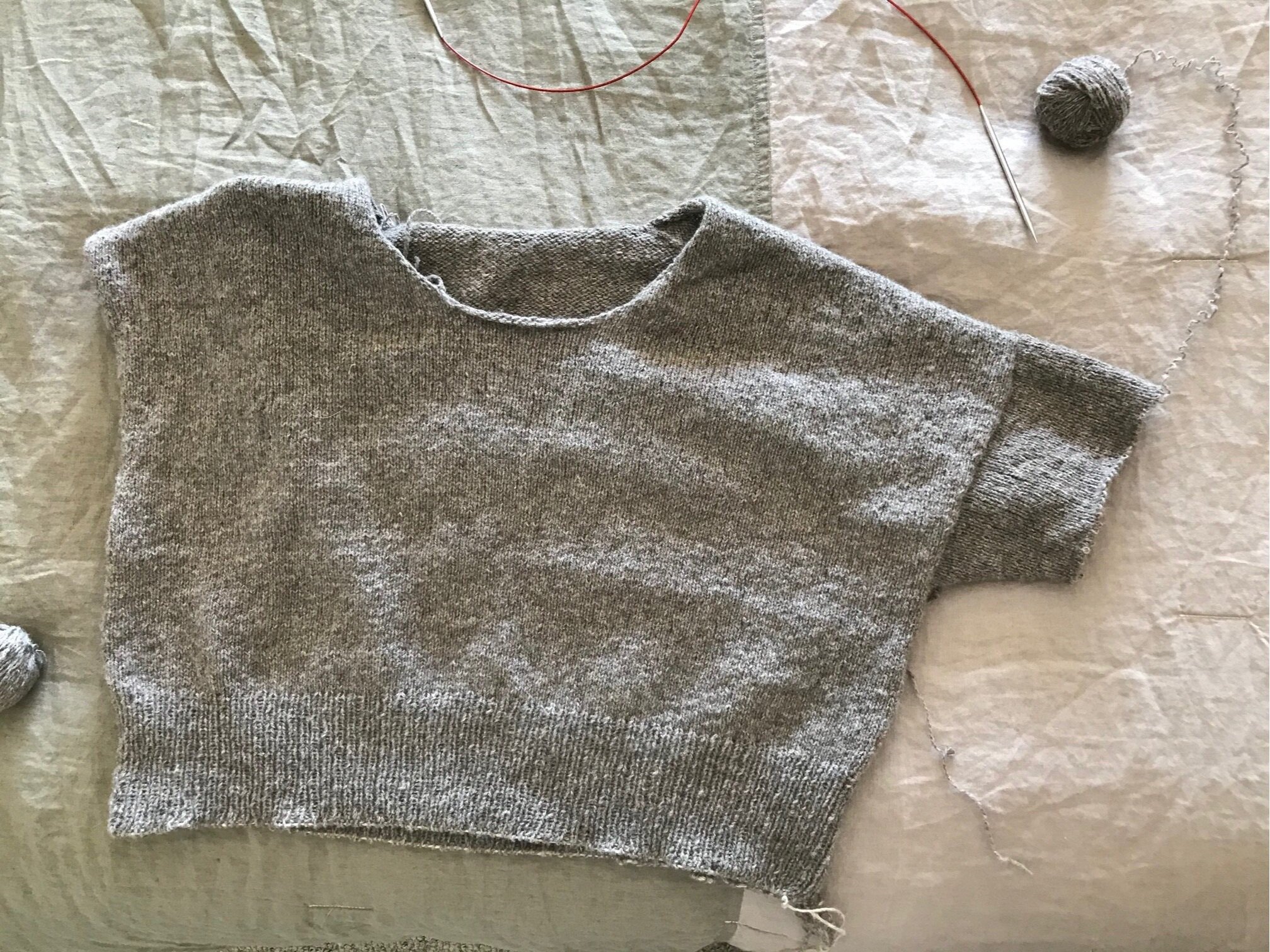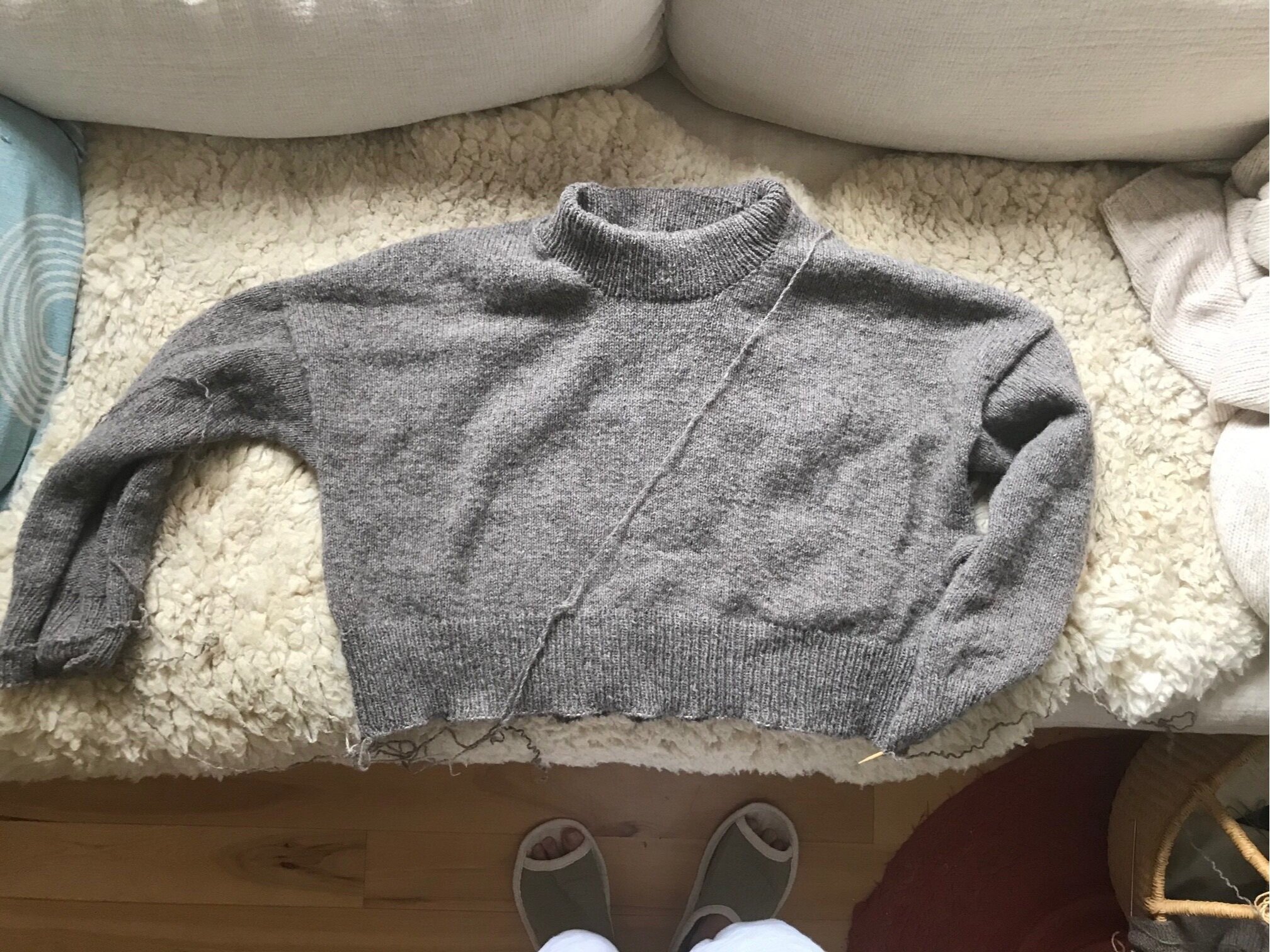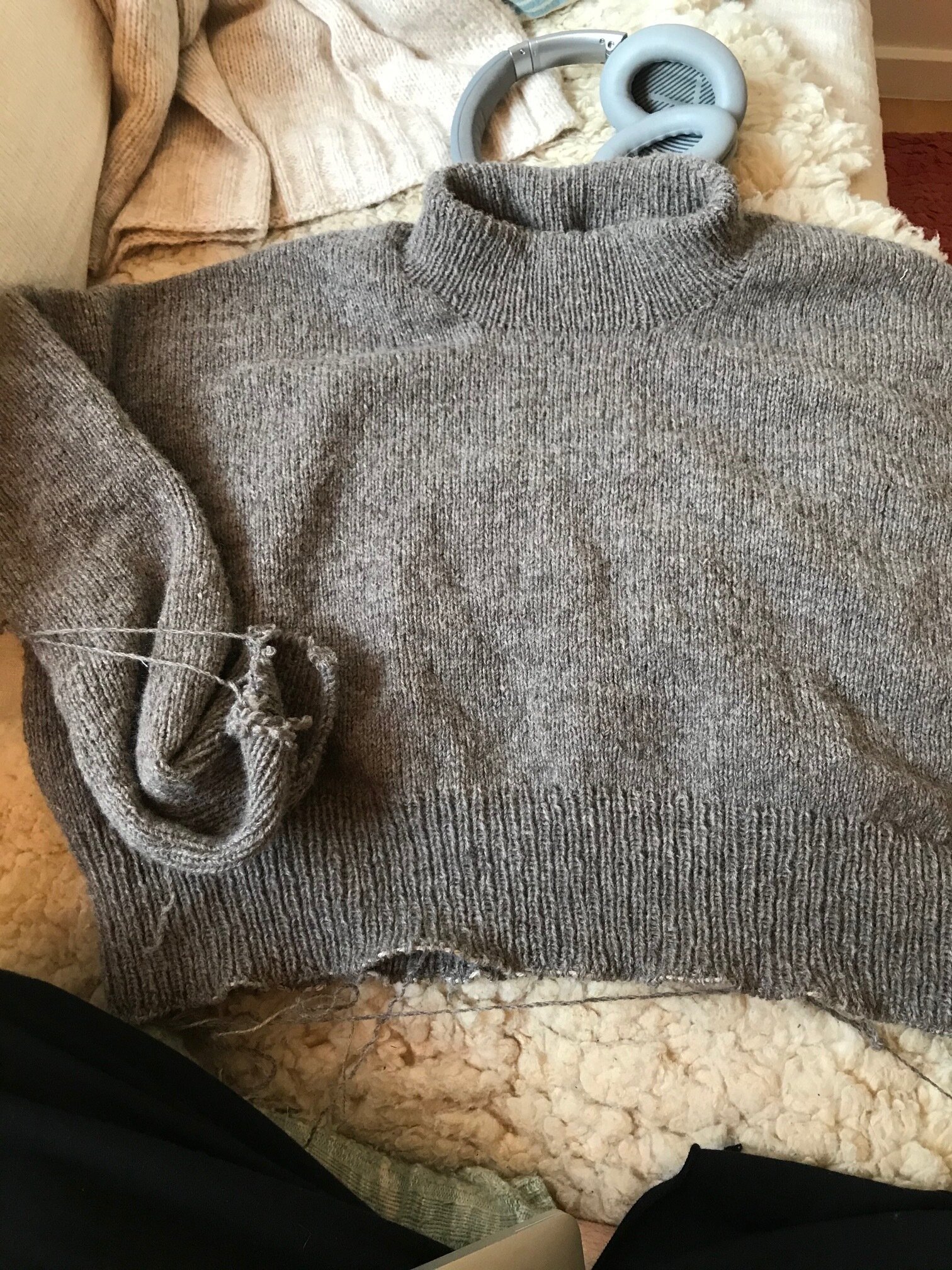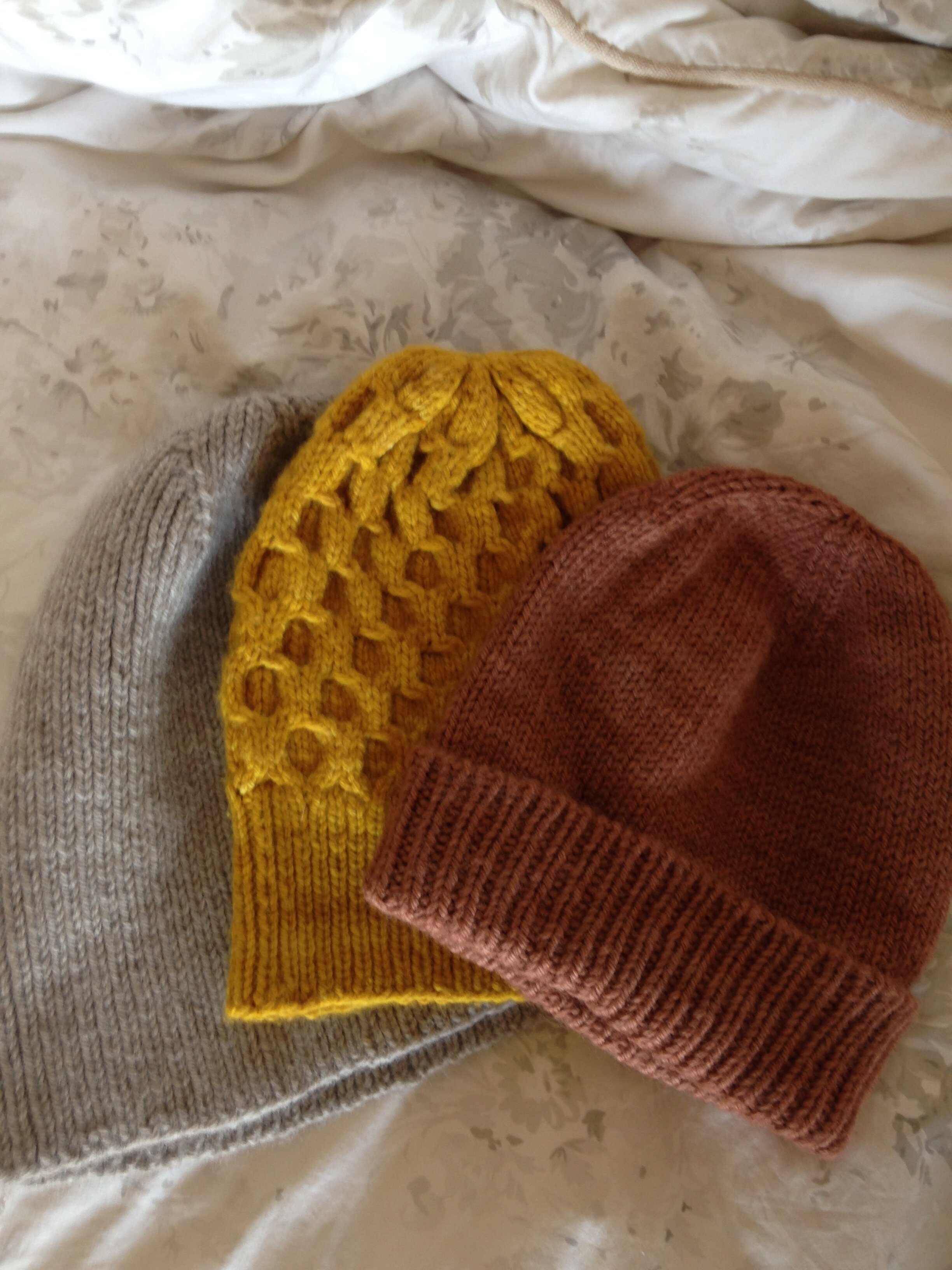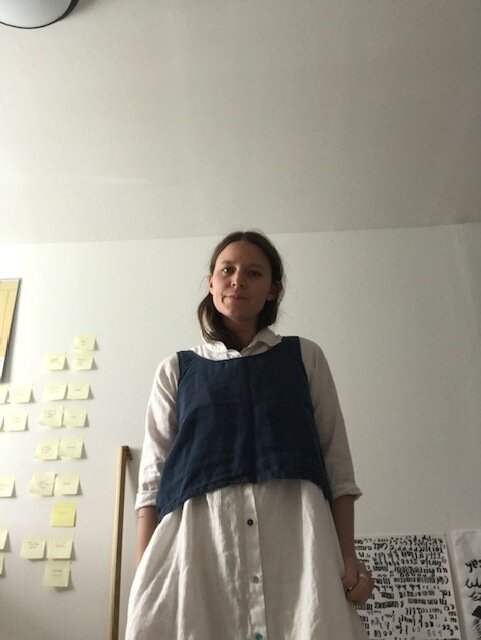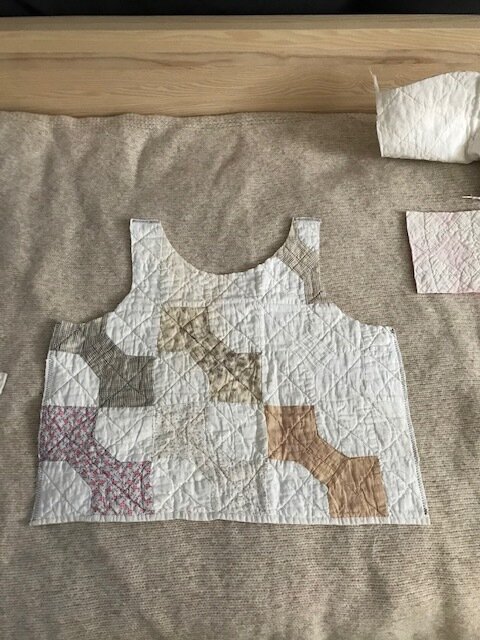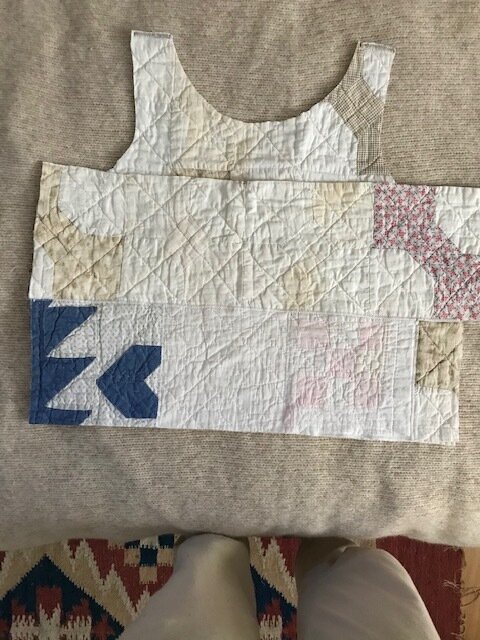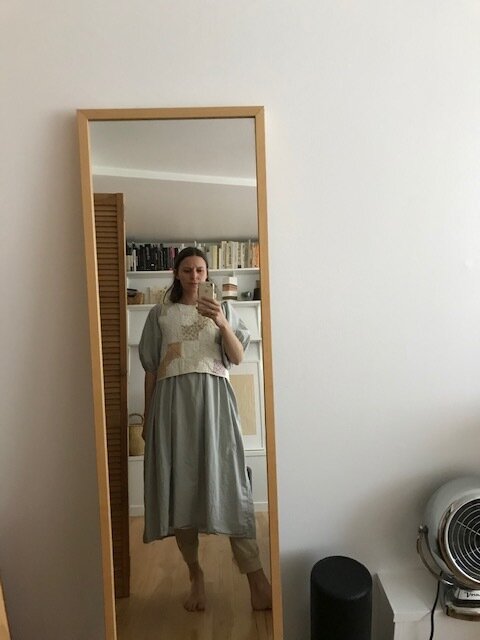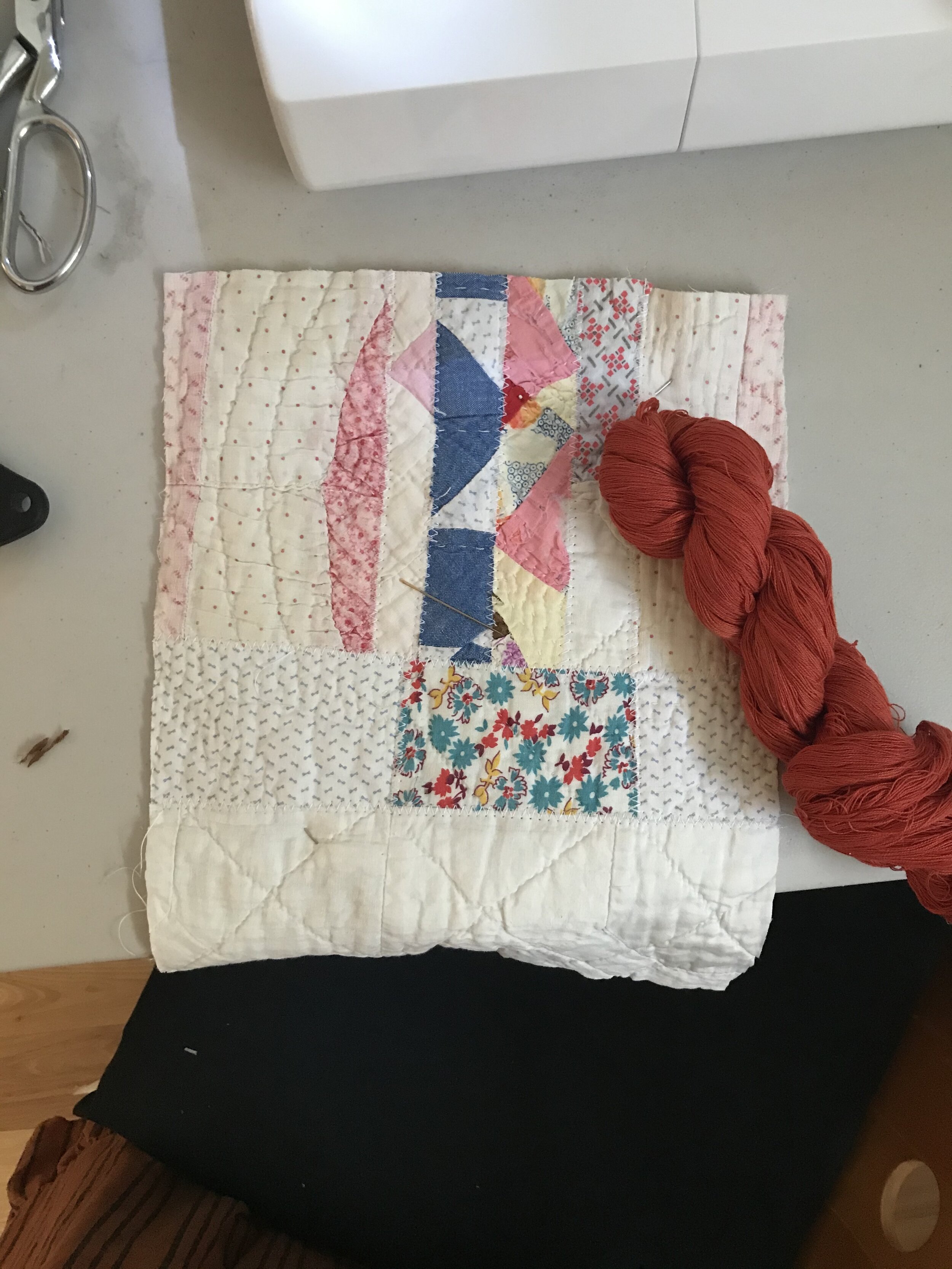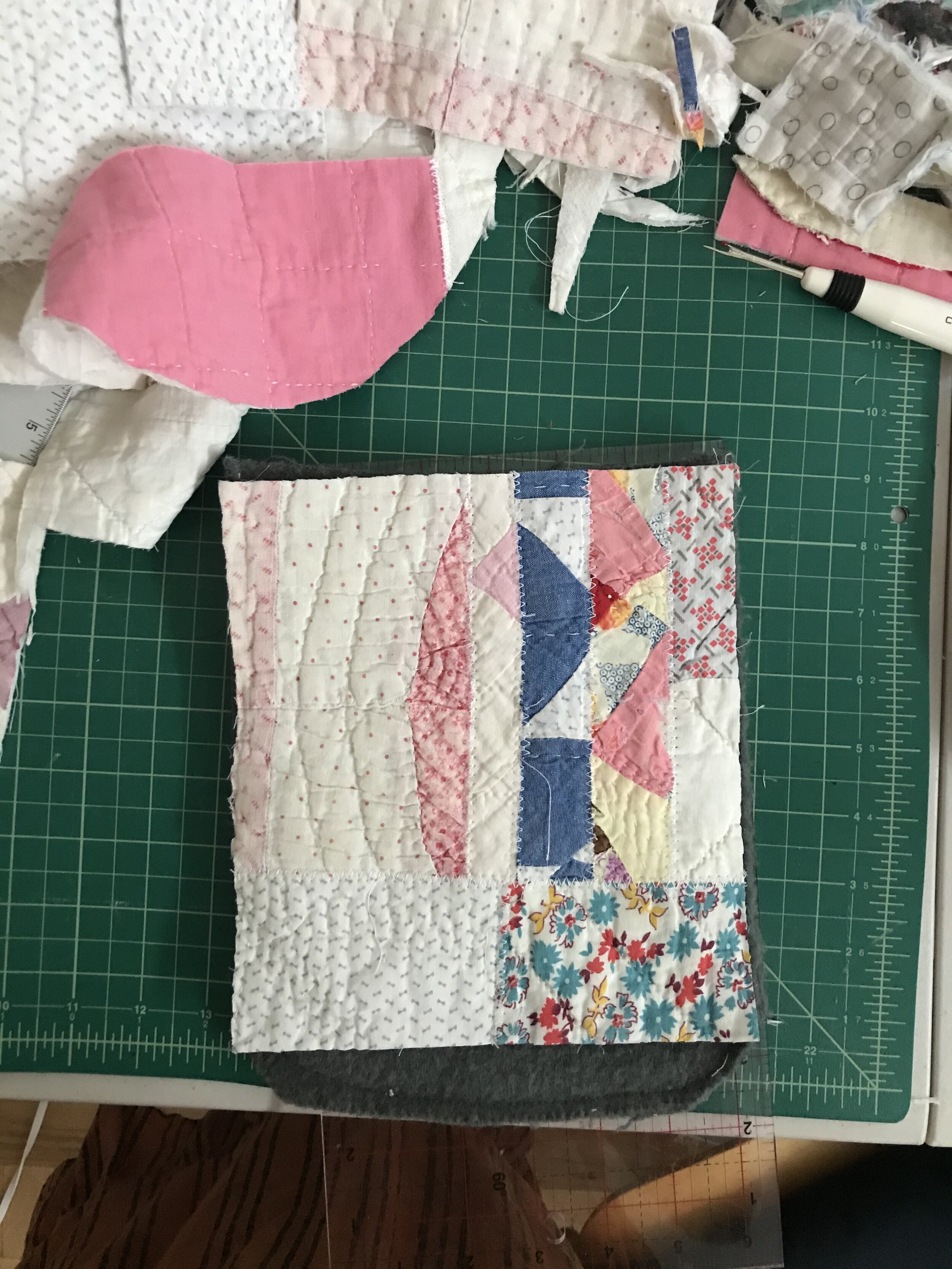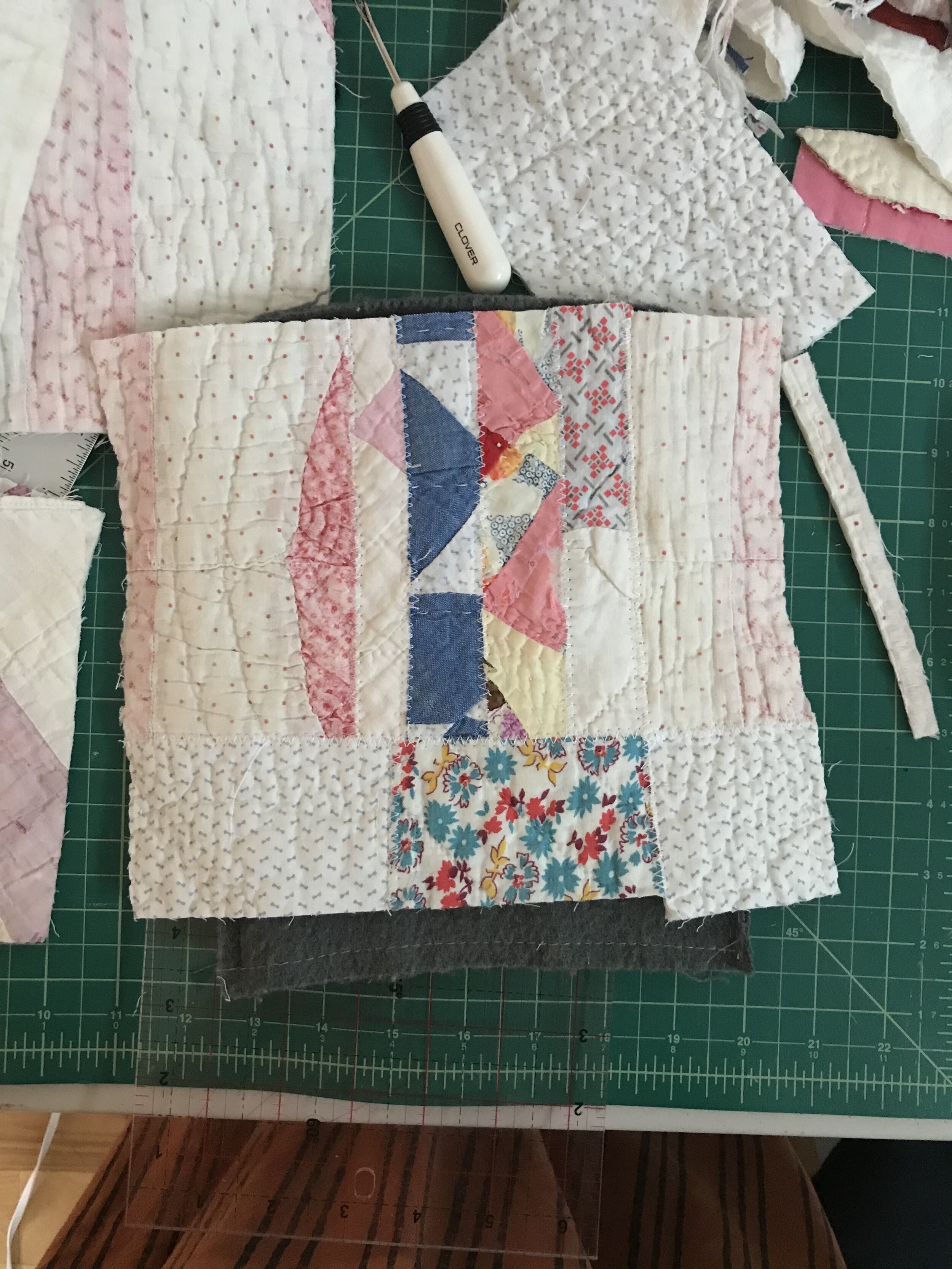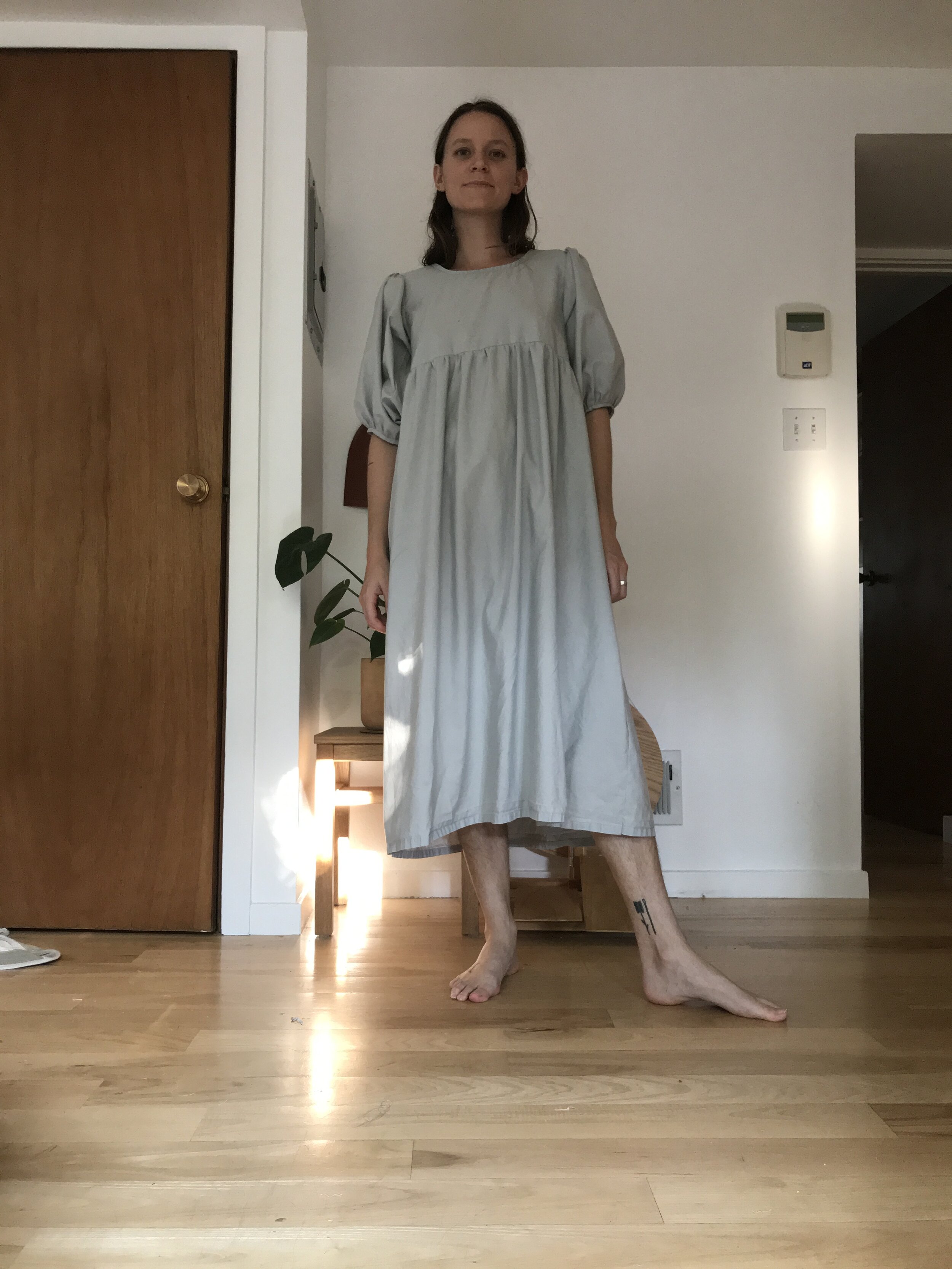A Vest for 30
I’m starting to notice a seasonal pattern I experience around late fall each year. After a long hiatus from making things with my hands, or even thinking about making things with my hands, I feel drawn into a flurry of creative practice.
This vest was born out of the last few weeks of this flurry-feeling.
On October 24th, I taught a beginner’s drop spinning class, an invitation for me to reacquaint myself with creative practice, and a little nudge towards accountability. The class was so wonderful and my students were so kind with my fumbling around, getting back into the teaching rhythm.
When I got home that afternoon, I was abuzz. I started working on various random projects and getting excited about knitting.
A couple days later, I happened to see an adorable little vest that my friend Meg made, that she posted in a Facebook story that I ferociously screenshot (see pics below). She mentioned that she had pulled the mismatched buttons from her grandmother’s stash, which reminded me to check my own grandmother’s sewing table for buttons. Lo and behold, these little coral-orange ones made clear they were meant to become the fasteners for this vest (also see pics below).
I cast on right away with Snoqualmie Valley yarn I bought in 2016 and dyed with foraged oak galls in 2019, held together with an undyed skein of alpaca/silk from Black Squirrel for softness and loft. The vest revealed itself to me as I knit it. The colors I had on hand for the contrast ribbing slowly but surely made clear they were not right - too little yarn, not the right contrast. I set aside my intention of making it from “waste” yarn, and instead I followed my instincts to Avenue Yarns one Saturday. I put together this palette which Josh rightly called “earthy primaries”. I couldn’t explain the color choices - the nearly cobalt blue, for one, being way outside my usual comfort zone. But it felt like something inside me was speaking, so I just listened. And I’m really glad I did - the colors together just feel really really right to me. They remind me of things I wore as a Kindergartner, the texture makes my chest and stomach feel held in all the right ways, and there’s something extra tender about being fastened up with buttons my grandmother touched.
Here’s what I made:
Vest No. 4 by My Favourite Things Knitwear. No major mods, just that I didn’t pay attention to how long the pattern said to make it and instead eyeballed it off where I wanted it to hit my waist.
Skills practiced:
Italian Bindoff - wow, this one took me a minute, but once I got the hang of it, I found it a lot easier than the long tailed tubular bind off method I learned for the last sweater I knit
Picking up stitches around edges, new methods for knitting from the top down
